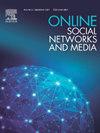Management of psychological emergency cases on social media: A hybrid approach combining knowledge graphs and graph neural networks
Q1 Social Sciences
引用次数: 0
Abstract
The effects of psychological crises are evolving at an astounding rate nowadays, presenting a significant challenge for everyone involved in tracking these disorders. Therefore, we propose in this paper a hybrid approach based on linguistic processing and numerical techniques allowing to: (i) identify the presence of psychological emergencies among social network users by analyzing their textual production, (ii) determine the specific type of emergency case, (iii) elaborate a graph for each type of emergency, reflecting the different dimensions linked to the psychological emergency, allowing for a better diagnosis of the situation and providing an overall view of the crisis type, (iv) combine the separate graphs for each emergency to address the various semantic aspects. The work was accomplished using advanced language model techniques, knowledge graphs and neural network graphs. The combination of these techniques ensures that their advantages are leveraged while overcoming their limitations in terms of result generalization. The evaluation of different parts related to detecting the presence of psychological problems, predicting specific type of emergency cases, and detecting links between knowledge graphs was measured using the F-measure metric. The values derived from this measure, corresponding to the evaluation of these three tasks, are, respectively, 83%, 87% and 80%. For the evaluation of the elaboration of each graph related to specific type of emergency cases, this was accomplished using qualitative metric standards. The results obtained can be considered encouraging given the significant scale of our approach.
求助全文
约1分钟内获得全文
求助全文
来源期刊

Online Social Networks and Media
Social Sciences-Communication
CiteScore
10.60
自引率
0.00%
发文量
32
审稿时长
44 days
 求助内容:
求助内容: 应助结果提醒方式:
应助结果提醒方式:


